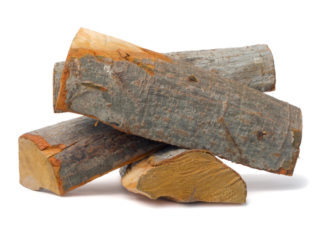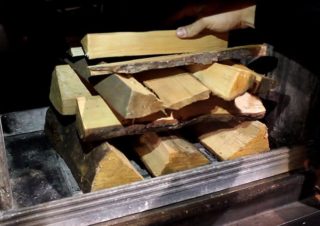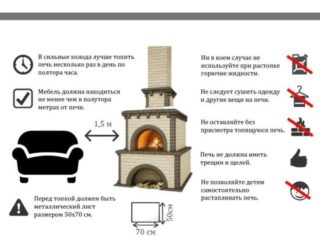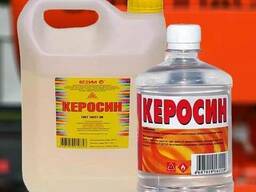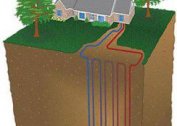Even the good heaters are not fully aware of all the subtleties and nuances of how to properly heat the stove with firewood in order to get the most out of them. Often such important points as the consumption of solid fuel and the correctness of its installation are overlooked. Given the increased cost of firewood in the domestic market, proper attention should be paid to the proper furnace heating in a private house.
What kind of firewood is suitable

Before preparing a home fire for laying fuel, it is advisable to understand the rules for its ignition and find out which firewood is best for the stove. For classic Dutch and Russian stove designs, the type of wood is selected depending on the following factors:
- heat transfer level from one bookmark;
- duration and intensity of combustion;
- smoke rate;
- the amount of ash generated during combustion.
Good firewood should quickly melt, have high heat dissipation and burn up to the end, without leaving a noticeable amount of waste. All these indicators of "wooden" fuel depend on the type of wood and on the quality of its drying.
Completely fresh, just sawn-off combustible material is not suitable for the furnace furnace, since during its disposal a lot of smoke will be generated and it will burn for a very long time.
Another unpleasant consequence of the use of raw or insufficiently dried firewood is the possibility of severe burns from saturated air with carbon dioxide. In order to get rid of the accumulated moisture, the firewood must first be thoroughly dried. To check the readiness of firewood for use, there is a very simple trick: just tap one log on another and listen to the sound being made. Well-dried wood blanks, unlike raw logs, are notable for their sonorous sound.
When choosing firewood, it is important to consider the time of their harvesting (winter or summer). The highest quality dry fuel is obtained from trees cut in winter, when the internal movement of juices in them is greatly inhibited. It is strongly discouraged to stock up with inexpensive aspen wood harvested in the spring and summer months, since the tree during this period has high humidity and needs long-term drying.
The best tree species for logging
To melt the stove, hardwood is considered the most suitable. Firewood from them is characterized by a high density of the fiber structure. They guarantee continuous burning and high heat dissipation. The following wood names belong to the category of deciduous varieties:
- oak;
- Linden;
- willow, ash and a number of other trees, including rare in most regions of Russia and expensive alder.
A good result is noted when using poplar, growing everywhere. It is customary to attribute some species of fruit trees to this category — apple trees, for example.
The listed types of firewood are suitable for a stove, a smokehouse, as well as a fireplace or buleryan installed in a country house. Due to the special properties of these deciduous trees, a unique aroma is felt during their combustion.
Second place in quality is coniferous wood - pine and spruce logs.As a rule, they burn well, but very often smoke and, when burned, form a large amount of soot - this is due to the high resin content. Other disadvantages of spruce and pine wood include a high rate of burnout, which limits the amount of heat received.
Stacking and burning firewood
The traditional approach to laying wood and melting the stove involves preparing a pyramid of logs, in the center of which is a crumpled piece of dry paper. A finely planed sliver is added there, and then it is all set on fire.
First of all, wood chips ignite from the lit paper, after which the fire spreads first to small, and then to large logs. The disadvantage of this kindling method is the inability to control the combustion process. Firewood "seizes" all at once and burns out entirely, and the process itself proceeds unevenly and quickly. After the combustion of part of the logs, new batches of firewood are thrown into the stove, which also quickly light up and immediately burn out.
The burning time can be artificially increased by changing the method of laying firewood in the furnace. One way to melt your stove involves the following procedure:
- The bottom row of logs fits into the firebox.
- A second row is laid on top with an offset of 5-10 cm on one side, forming a small protrusion in relation to the first.
- Then fit the third and all subsequent rows.
- From the edge in the area of the protrusion, a piece of paper is put together with a chip from birch, after which all this is ignited.
Correct laying in the oven is more convenient to consider using briquettes as an example. This type of solid fuel usually does not light up immediately and entirely, but burns out very slowly. In this case, the epicenter of combustion is gradually shifted to one side (from left to right, for example). For this reason, the briquette bookmark from individual lamellae is utilized for a rather long time and generates a greater amount of heat.
When laying solid fuel based on sawdust, as well as any other dry fuel, individual billets are not placed close to each other. Between them, a small gap is necessarily left for the free movement of air masses.
Rules for refueling
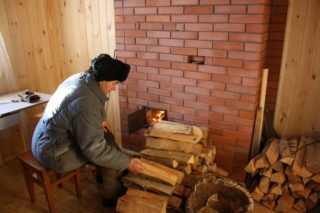
A regular furnace of a brick kiln is rarely limited to only one tab, which usually lasts only 6-8 hours of continuous burning. Therefore, most experienced stoker before storing the stove in advance are stocked with an additional portion of firewood. After burning through the first bookmark, they do not wait for the appearance of “blue lights” on the coals and begin to reload solid fuel into the working area.
Before starting a stove, it’s important to immediately calculate the number of expected bookmarks and prepare an appropriate supply of firewood. The next time you load them, you will need to follow the rules that allow you to save the accumulated heat and exclude the possibility of carbon monoxide penetrating into the living room. To quickly ignite new portions, the remains of the previous bookmark, together with glowing coals, are raked in the central part.
The termination of the furnace
With sufficient heating of the heated room, the furnace furnace is completed according to certain rules:
- wait for the complete burning of the last portion of firewood, coal or pellets;
- make sure that there is no carbon monoxide by the color of the flame over the coals (without a bluish tint);
- completely close all furnace leaves (firebox, blower and gate valve).
After this, it is recommended to carefully ventilate the room and let it stand for several hours.
Safety regulations
Safe methods of ignition of the furnace will allow the user to avoid unpleasant consequences, the most harmless of which is the burning of floorboards in the house. Particular attention is paid to safety issues in buildings associated with high temperatures. These include baths, where ideal conditions are created for an accidental fire.
Before you start heating the stove with wood in flammable rooms (including the dressing room), it is important to understand the following safety requirements:
- the attack near the furnace must be upholstered with a metal sheet of at least 50x70 mm in size, which is recommended to be painted with a high-quality flame retardant;
- the distance from the combustion chamber door to the nearest unprotected objects and walls should be kept within at least 1.25 meters;
- flammable materials and combustible substances are not allowed to be stored near a home or sauna firebox;
- solid fuel is stored in a separate room or at designated sites;
- the furnace is completed at least two hours before going to bed or completely leaving the room;
- Do not operate the stove if there is the slightest suspicion of a malfunction.
A bath heating tank with controls is best placed on the side of the furnace (they are usually led out to the washing room). This technique will eliminate accidental contact with hot parts.
During the furnace, it is strictly forbidden:
- apply kerosene, diesel fuel, gasoline, as well as other flammable and combustible liquids for ignition;
- to store in a heated room a supply of firewood exceeding the daily requirement;
- leave the burning stove without supervision;
- dry and store firewood and other combustible materials on it;
- heat coal constructions unsuitable for their use with coal or coke;
- use firewood blanks, the length of which is much larger than the size of the firebox, as well as operate the stove with the doors fully open.
It is forbidden to heat the furnace if there are cracks or other damage on its base or in the chimney pipe.

